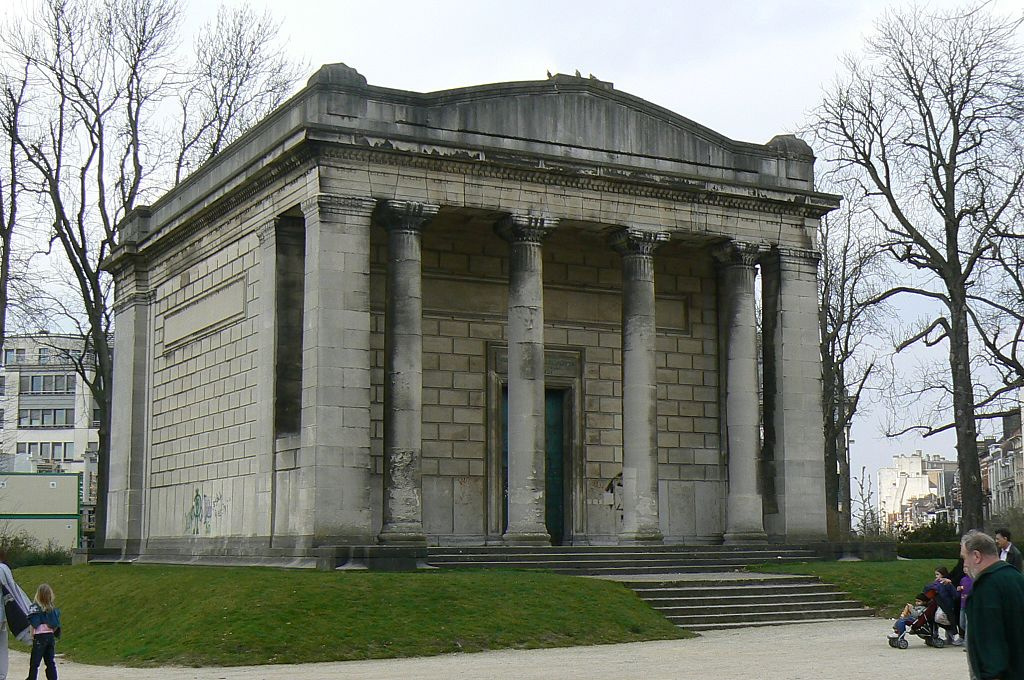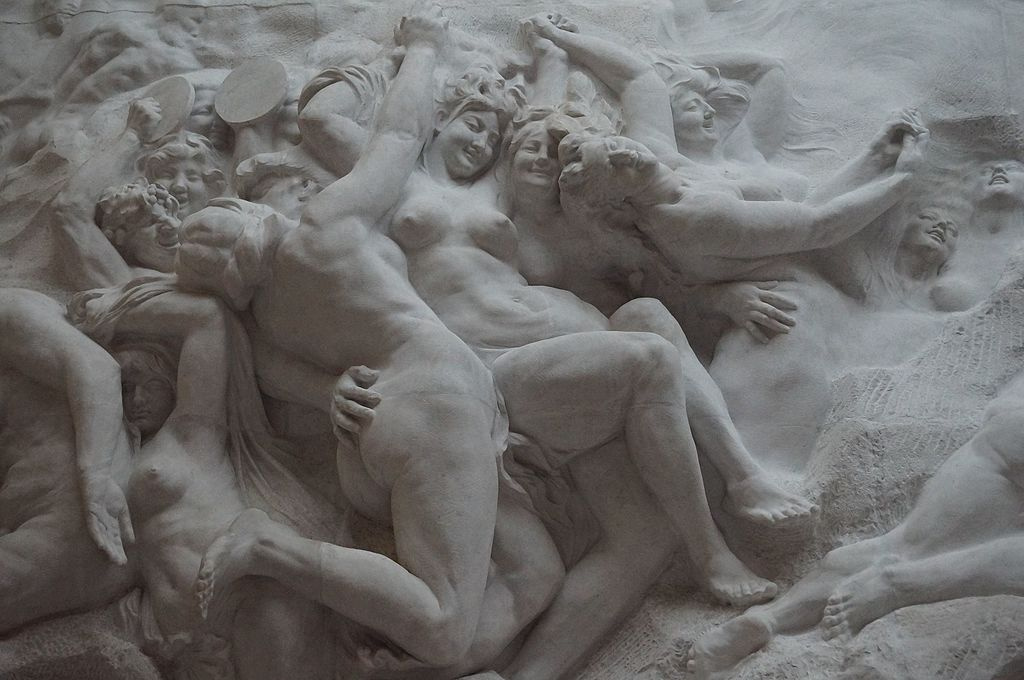log in
Enter site
Login to use Arthive functionality to the maximum
Temple of human passions
Victor Horta • Architecture, 1896
Description of the artwork «Temple of human passions»
Temple of human passions (also known as the Horta-Lambo Pavilion) is a pavilion in the shape of a Greek temple that Victor Horta built in the Brussels Fiftieth Park. This building was designed to "frame" and demonstrate the large-scale marble relief of Jeff Lambo "Passion of the Human."
Jeff Lambo presented a draft of the future sculpture on paper at the 1889 Triennial in Ghent, causing great excitement. The very next year, King Leopold II allocated 136 thousand francs to the sculptor to bring the ambitious idea to life. A huge relief measuring 8 by 12 meters consists of many human figures depicting the happiness and sins of mankind, and Death rises above them. The sculpture also captured the “negative” passions of people - war, violence and suicide.
Victor Horta received an order to build a pavilion for the Lambo sculpture thanks to the recommendation of his teacher Alphonse Bal, who was the court architect of Leopold II. The small building, which at first glance looks like a classic antique temple, actually already contains elements of the future "corporate" style of Victor Orth. There is not a single truly straight line in the pavilion; every classic detail is revised and rethought. After the end of the First World War, Horta will return to a similar style, designing the Center for Fine Arts in Brussels and the Museum of Fine Arts in Tournai.
The temple of human passions awaited a complex and unusual fate. It was originally planned that the pavilion will become part of the 1897 International Exhibition in Brussels. But, despite the fact that the construction was completed on time, the official opening of the pavilion had to be postponed due to irreconcilable differences between the architect and the sculptor. Horta designed an open facade: according to his idea, the roof resting on the columns provided shelter on rainy days, but the absence of walls allowed passers-by to see the sculpture while walking in the park. Lambo insisted on erecting a wall behind the columns. The dispute remained unresolved for several years, and on the day of the grand opening of the pavilion on October 1, 1899, the temple was still in line with the idea of Orth.
However, harsh public opinion intervened here. The conspicuous Belgian public was outraged by the frank image of naked male and female bodies and carnal joys, as well as the image of the crucified Christ under the figure of Death. Only three days after the opening, the pavilion was hidden from the viewers' eyes behind a wooden barricade. Under pressure from the public and authorities, Horta was nevertheless forced to build a wall behind the colonnade. It was built after the death of Jeff Lambo, so he never saw the pavilion in its current form.
The temple of human passions remained unattended and was closed to the public for a century, with the exception of rare days of open doors. Since 2002, the pavilion was opened for one hour a day. In the 21st century, such measures were no longer dictated by the conservatism of the public, but by protection from possible acts of vandalism. However, the building, which remained almost abandoned for 100 years, required urgent repairs. The sculpture of Jeff Lambo also needed updating and restoration. Work on the reconstruction of the pavilion and relief was fully completed in 2015. And now the Temple of Human Passion is finally open to the public in the summer.
Author: Evgenia Sidelnikova
Jeff Lambo presented a draft of the future sculpture on paper at the 1889 Triennial in Ghent, causing great excitement. The very next year, King Leopold II allocated 136 thousand francs to the sculptor to bring the ambitious idea to life. A huge relief measuring 8 by 12 meters consists of many human figures depicting the happiness and sins of mankind, and Death rises above them. The sculpture also captured the “negative” passions of people - war, violence and suicide.
Victor Horta received an order to build a pavilion for the Lambo sculpture thanks to the recommendation of his teacher Alphonse Bal, who was the court architect of Leopold II. The small building, which at first glance looks like a classic antique temple, actually already contains elements of the future "corporate" style of Victor Orth. There is not a single truly straight line in the pavilion; every classic detail is revised and rethought. After the end of the First World War, Horta will return to a similar style, designing the Center for Fine Arts in Brussels and the Museum of Fine Arts in Tournai.
The temple of human passions awaited a complex and unusual fate. It was originally planned that the pavilion will become part of the 1897 International Exhibition in Brussels. But, despite the fact that the construction was completed on time, the official opening of the pavilion had to be postponed due to irreconcilable differences between the architect and the sculptor. Horta designed an open facade: according to his idea, the roof resting on the columns provided shelter on rainy days, but the absence of walls allowed passers-by to see the sculpture while walking in the park. Lambo insisted on erecting a wall behind the columns. The dispute remained unresolved for several years, and on the day of the grand opening of the pavilion on October 1, 1899, the temple was still in line with the idea of Orth.
However, harsh public opinion intervened here. The conspicuous Belgian public was outraged by the frank image of naked male and female bodies and carnal joys, as well as the image of the crucified Christ under the figure of Death. Only three days after the opening, the pavilion was hidden from the viewers' eyes behind a wooden barricade. Under pressure from the public and authorities, Horta was nevertheless forced to build a wall behind the colonnade. It was built after the death of Jeff Lambo, so he never saw the pavilion in its current form.
The temple of human passions remained unattended and was closed to the public for a century, with the exception of rare days of open doors. Since 2002, the pavilion was opened for one hour a day. In the 21st century, such measures were no longer dictated by the conservatism of the public, but by protection from possible acts of vandalism. However, the building, which remained almost abandoned for 100 years, required urgent repairs. The sculpture of Jeff Lambo also needed updating and restoration. Work on the reconstruction of the pavilion and relief was fully completed in 2015. And now the Temple of Human Passion is finally open to the public in the summer.
Author: Evgenia Sidelnikova



